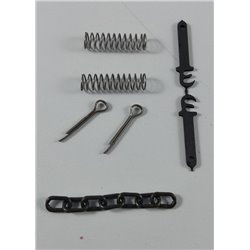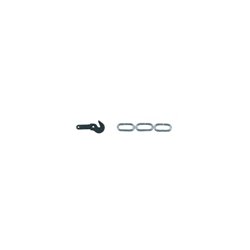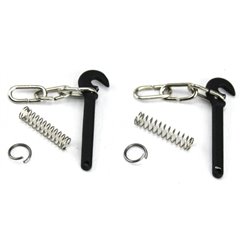Kadee couplings are a popular choice for railway modellers, particularly those modelling in HO and OO gauge....
No products
Product successfully added to your shopping cart
There are 0 items in your cart. There is 1 item in your cart.
Search Tips
What are 3 link couplings?
Three link couplings are exactly that: they are three links of chain that will connect your wagons.
These "loose" couplings were used in Britain on low speed trains till the 1970s. These trains did not have any automatic braking system and because of that, there was no pipe to be connected between wagons. The guard’s van at the back of the train was used to help control the train by keeping the couplings stretched.
Some model railway enthusiasts prefer the look of these couplings as they are as near to the real thing as you can get.
The couplings look great, the only drawback is the uncoupling process as it can prove to be a bit fiddly removing the chain link from the hook.
Most modellers have made their own uncoupling tool to alleviate this problem. Alternatively, you could use a small crochet hook rather than cobbling something together.
Click here to receive the tips weekly in your mailbox. You can unsubscribe at any time.



.jpg)






